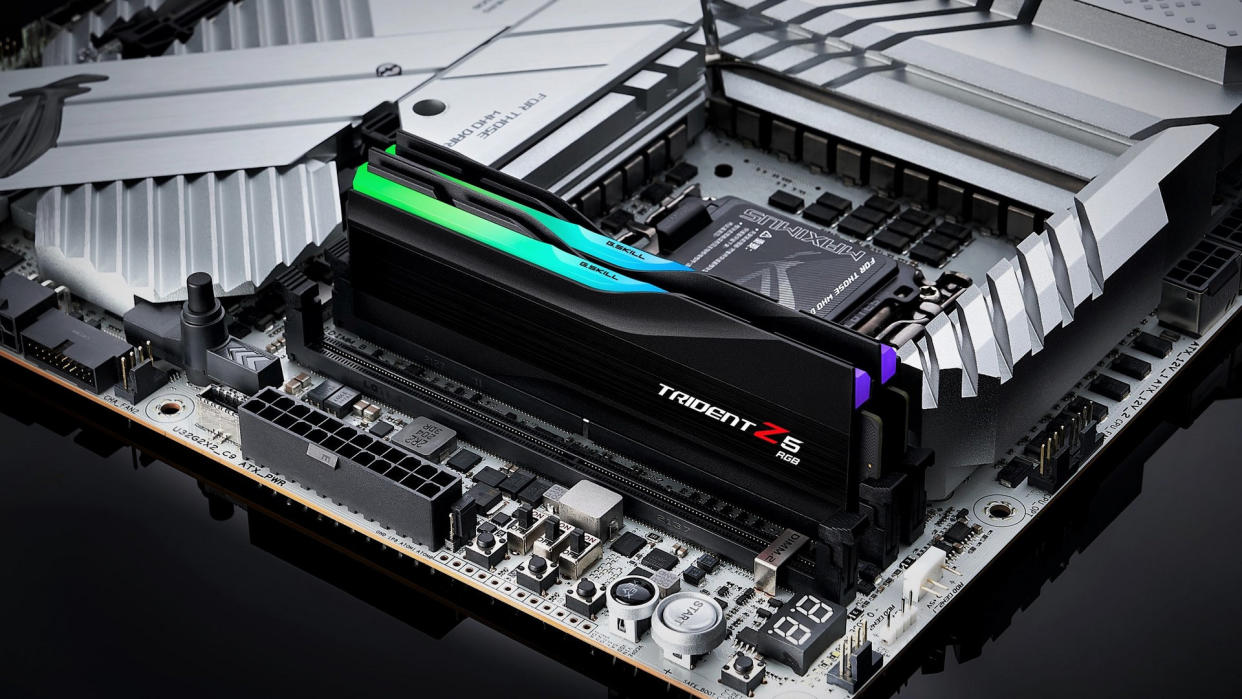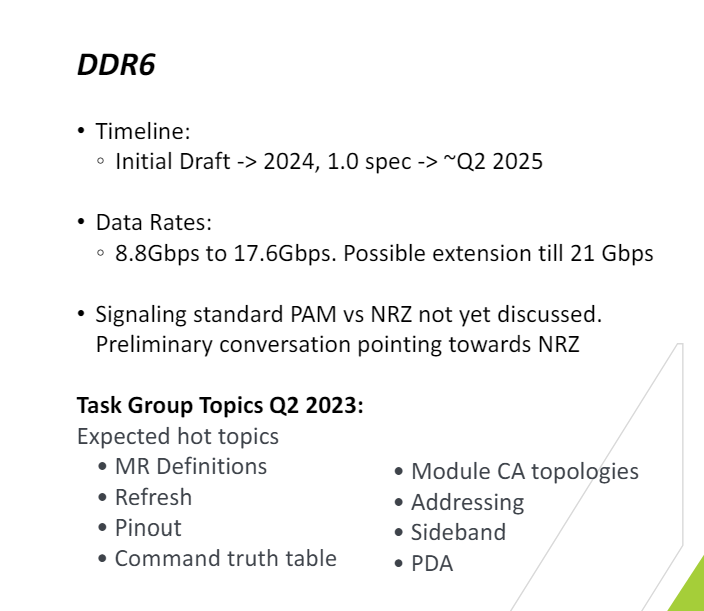Leak suggests that DDR6 development has already started, aiming for 21 GT/s

The transition to DDR5 started back in 2021 but this move from DDR4 to DDR5 is still in progress, and there are many new DDR4-based systems being shipped every day. But according to a slide published by @DarkMontTech, the industry has already began to develop DDR6, the next generation of the mainstream DRAM standard and it may arrive a bit earlier than we expect. Though, we have reasonable doubts about it so ensure that you take the appropriate dose of salt.
The slide, the origin of which is unknown (yet it resembles slides from one of the major high-tech companies), indicates that data transfer rates for DDR6 are set to significantly improve compared to DDR5 as it claims to start at 8.8 GT/s and going up to 17.6 GT/s. There is also a possibility of extending these rates further, potentially reaching up to 21 GT/s.

Unfortunately, the slide does not describe how these transfer rates are going to be achieved as by now even the signalling standard (PAM vs. NRZ) has not yet been decided, but preliminary conversations suggest a preference for NRZ, which seems way too high for 17.6 GT/s – 21 GT/s.
As of Q2 2023, the task group(s) reportedly was (were) formed to focus on several key aspects essential for DDR6 development. These include defining mode register parameters, refresh mechanisms, pinout configurations, and creating a command truth table. Additionally, the task group explored module command/address topologies and addressing schemes (design and arrangement of how command and address signals are routed within memory modules, which affects performance, signal integrity, and power consumption), which are vital for physical and logical organization of memory modules. Other important topics for discussion included sideband signalling and post-package (PDA) repair. Sideband signalling deals with additional data paths for improved communication, while PDA focuses on repair mechanisms to enhance the durability and lifespan of memory modules. Each of these areas are critical for ensuring the reliability and efficiency of DDR6 memory.
It is unclear whether the task group(s) developing DDR6 has (have) finalized their work. However, the slide outlines development timeline for DDR6 memory pretty clearly: the initial draft is expected to be ready in 2024. Following this, the 1.0 specification is projected to be completed by approximately Q2 2025.
The slide does not disclose when its authors expect transition to DDR5 to start, though transition to DDR5 began in 2021, about a year after the final specification of the standard was published. Assuming that DDR6 spec will be finalized in Q2 2025, transition to this technology could start as early as in the second half of 2026. Yet, this could be a bit too early as in the coming years both AMD and Intel plan to adopt rather sophisticated MRDIMM and MCRDIMM DDR5-based memory for their server platforms and they are not going to need next-gen DRAM this yearly.

